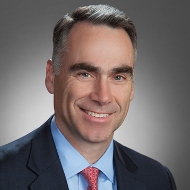By Chris O’Malley
Entergy’s request for a $187 million transmission upgrade near Lake Charles, La., will receive a “full review” by MISO’s board following stakeholder dissent over its classification as an out-of-cycle project.
At the Planning Advisory Committee meeting last week, the transmission developer and independent power producer sectors voted against MISO staff’s conclusion that the request by Entergy qualified as an out-of-cycle reliability project. The vote was 2.2 in favor of the recommendation, two against and 4.8 abstaining.
Five smaller out-of-cycle proposals by Entergy received votes of 3.2 in favor and 3.8 abstaining, with the transmission developers voting against.
The MISO board must approve all out-of-cycle requests but only conducts “full” reviews for those receiving negative votes at the PAC.
George Dawe, vice president of Duke-American Transmission Co. and the representative for the transmission developers, told the PAC that MISO had failed to follow its procedures in all of the out-of-cycle requests and that the Lake Charles project failed to meet MISO’s out-of-cycle criteria.
MISO’s transmission planning rules allow out-of-cycle consideration for reliability needs identified after the deadline for inclusion in the annual Transmission Expansion Plan if the project is needed within three years and expected in service within four years. Entergy submitted the request last December, saying increased industrial demand requires the project be completed by June 2018.
Dawe argued that Lake Charles isn’t a baseline reliability project. He also said Entergy had not defined the new load it is citing as the need for the project. He said the scope of the project — including two new substations and 25 miles of 500-kV and 230-kV transmission — appears to be speculative, “beyond what is needed to reasonably serve load.”
Jeff Webb, MISO’s director of planning, repeatedly pressed Dawe to specify exactly how MISO was deviating from established procedures. He also asked that opponents state what alternatives they would suggest while still meeting the June 2018 in-service date sought by Entergy.
“I have trouble seeing how we are deviating from the process,” Webb said.
Stakeholders: Not Enough Details to Justify
“Generally,” Dawe replied, “more information has to be provided regarding this OOC project.”
Dawe said he would like to see evidence that MISO verified Entergy’s load requirements and consideration of alternatives to the project as proposed. “In our view … this project is ripe for [a] market-efficiency project” that could serve ratepayers more efficiently and cost-effectively, Dawe said.
MISO officials told the South Technical Study Task Force on Feb. 11 that they studied alternative ways to route power to the growing area but all were fraught with performance or permitting problems. (See Stakeholders Again Light up MISO over Support for Entergy Out-of-Cycle Upgrade.)
Webb said that if MISO spent another month determining whether Lake Charles qualified as an efficiency project and should be opened to competition, it’s likely that “we wouldn’t have an approved developer until a year from now.”
The question then would be whether service would be in place in time. “You’re asking us, MISO, to take a huge risk,” Webb added.
Dawe reiterated that he didn’t believe Lake Charles met the qualifications for out-of-cycle status.
Beyond Reliability Needs?
Cynthia Crane, principal policy analyst at ITC Holdings, said the need for the upgrades has not been clearly demonstrated, raising doubts about the certainty of Entergy’s need date. Crane told the committee said she was speaking for her company and not the transmission owners sector, which voted yes for the Lake Charles OOC request. (EDITOR’S NOTE: An earlier version of this article incorrectly stated that Crane was speaking on behalf of the transmission owners sector.)
Tia Elliott, director of regulatory affairs for NRG Energy and the IPP sector’s representative, told the PAC that the sheer size of the Lake Charles project warrants further scrutiny.
The project is said to be key in bringing another 617 MW to the Lake Charles area to support a rebounding industrial base.
Crane said her company’s engineers looked at the proposed project and have some concerns that it is larger than is needed for just reliability purposes.
Another issue, she said, is declining oil prices, which portend a potential economic slowdown in the Gulf region. That raises the question of whether Entergy will need the upgrades as early as it has stated, she said.
Clouded by Customer Confidentiality
Webb, as he has in previous meetings in which the Entergy request has been discussed, said Entergy’s need for the project was consistent with previous growth projections presented by the utility and with growth trends in the region.
Charles Long, director of transmission planning for Entergy Services, said the company would have had to have known about additional customer demand by September 2013 to have made the request during the normal MTEP process.
Entergy filed the Lake Charles request with MISO on Dec. 15, saying it learned of the new demand Dec. 1.
MISO said that it has not been privy to customer communications with Entergy about their expansion plans. Entergy has said that information is confidential for competitive reasons.
One stakeholder suggested that utilities that cite confidentiality claims as a reason not to be as forthcoming with MISO should be summarily denied out-of-cycle requests.
Webb said he didn’t think MISO has the authority to delve into confidentiality agreements between a utility and its industrial customers.










